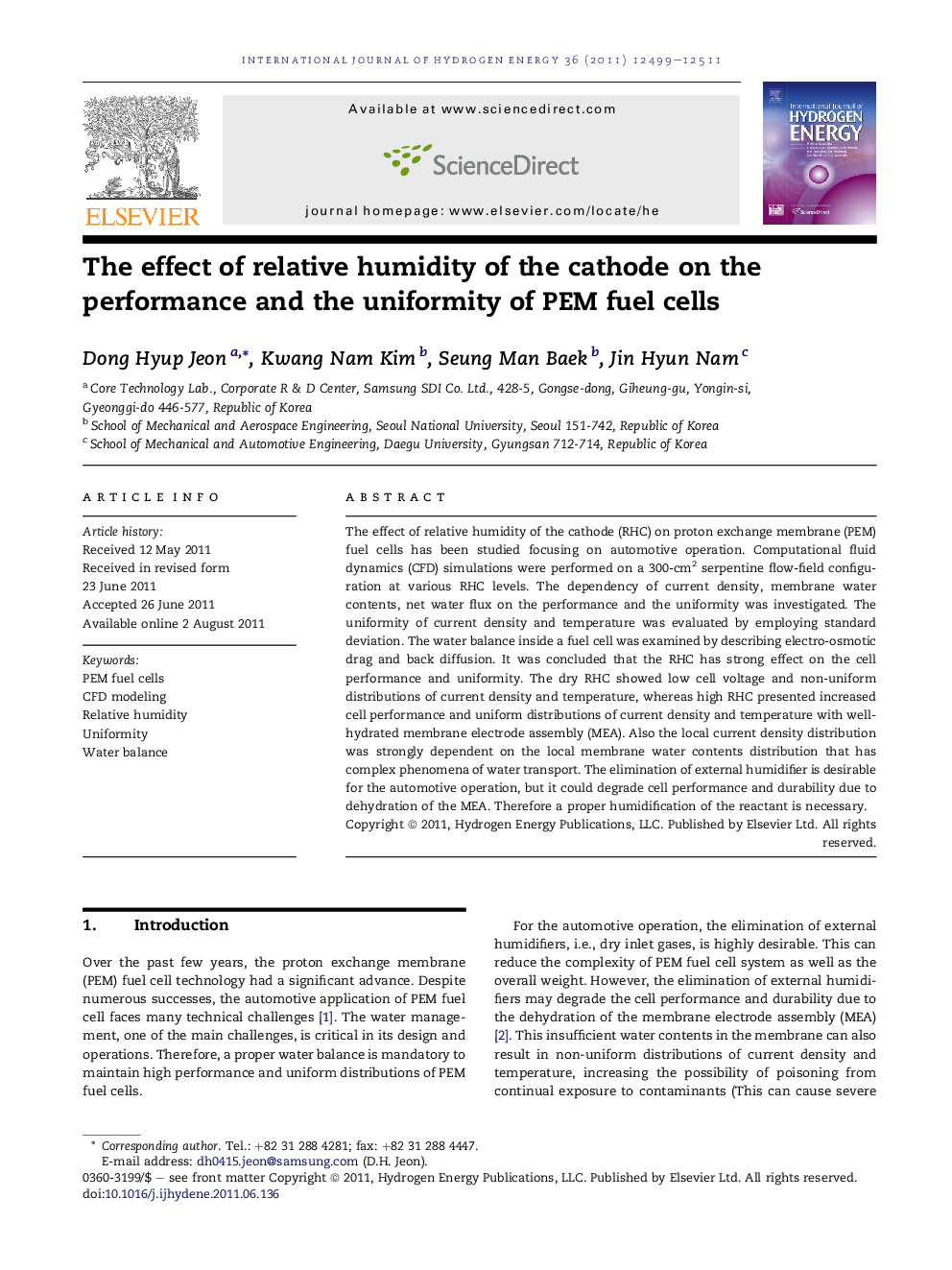| Article ID | Journal | Published Year | Pages | File Type |
|---|---|---|---|---|
| 1282453 | International Journal of Hydrogen Energy | 2011 | 13 Pages |
The effect of relative humidity of the cathode (RHC) on proton exchange membrane (PEM) fuel cells has been studied focusing on automotive operation. Computational fluid dynamics (CFD) simulations were performed on a 300-cm2 serpentine flow-field configuration at various RHC levels. The dependency of current density, membrane water contents, net water flux on the performance and the uniformity was investigated. The uniformity of current density and temperature was evaluated by employing standard deviation. The water balance inside a fuel cell was examined by describing electro-osmotic drag and back diffusion. It was concluded that the RHC has strong effect on the cell performance and uniformity. The dry RHC showed low cell voltage and non-uniform distributions of current density and temperature, whereas high RHC presented increased cell performance and uniform distributions of current density and temperature with well-hydrated membrane electrode assembly (MEA). Also the local current density distribution was strongly dependent on the local membrane water contents distribution that has complex phenomena of water transport. The elimination of external humidifier is desirable for the automotive operation, but it could degrade cell performance and durability due to dehydration of the MEA. Therefore a proper humidification of the reactant is necessary.
► The effect of RHC on PEMFCs has been studied focusing on automotive operation. ► CFD simulations were performed on a serpentine flow-field configuration at various RHC levels. ► The RHC had strong effect on the cell performance and uniformity.
